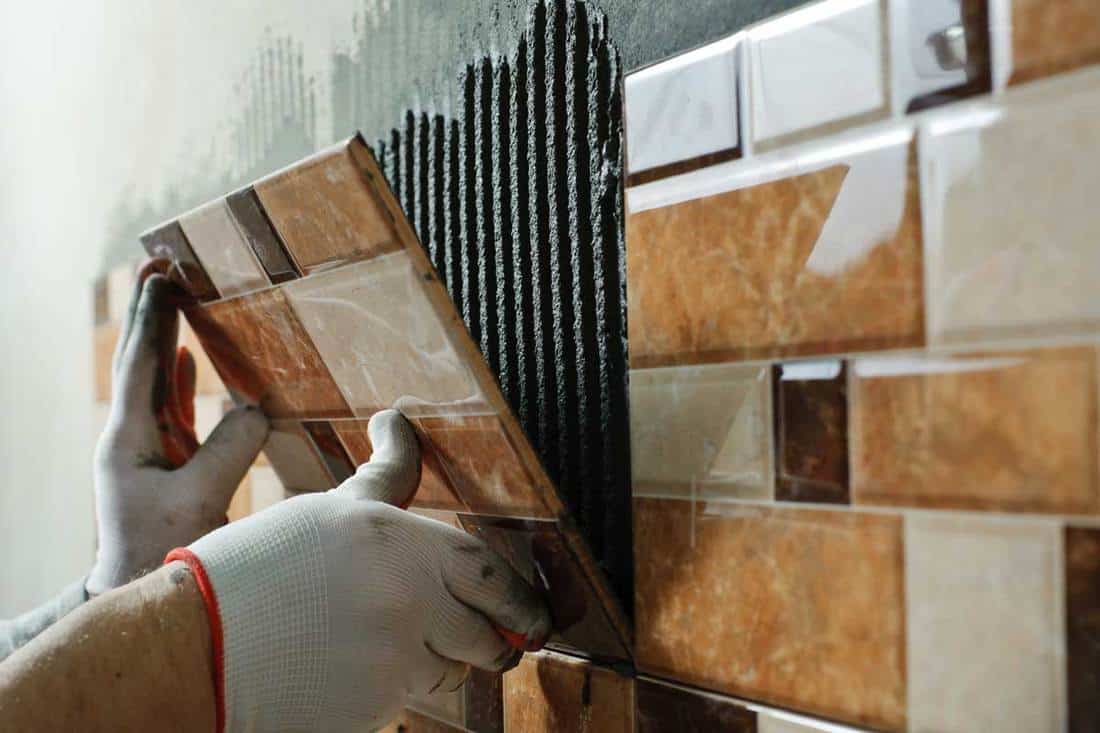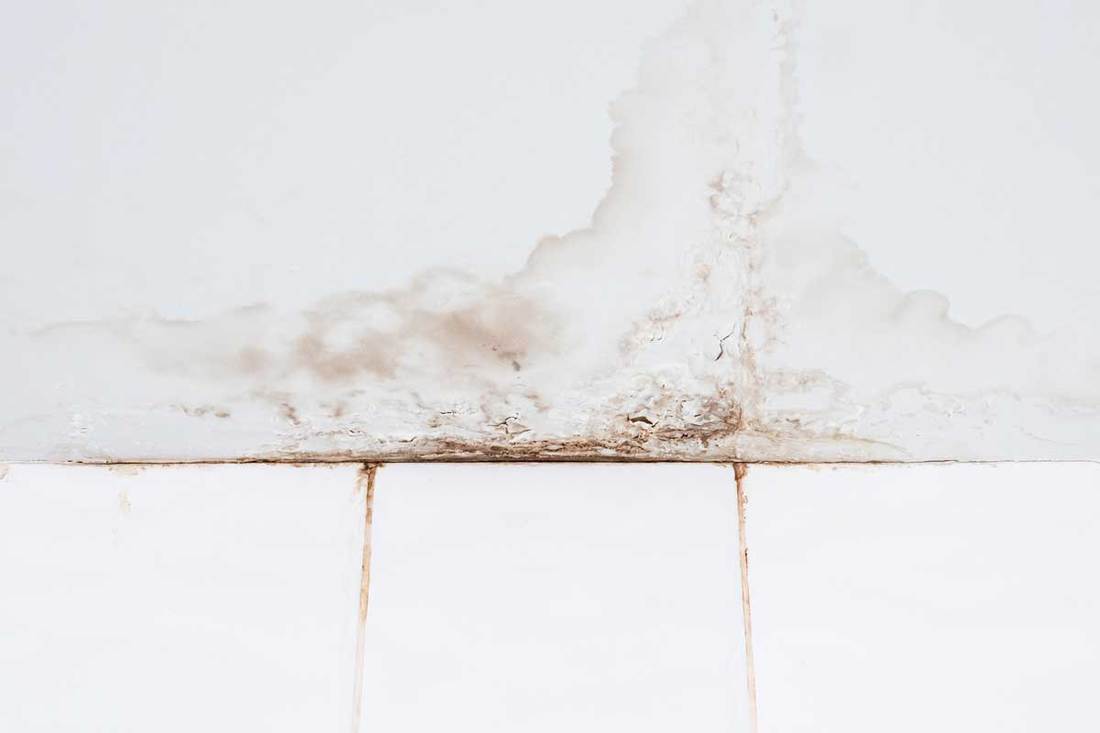Falling bathroom tiles are a real concern for homeowners. Not only does it look unappealing when your bathroom tiles are starting to fall from their proper place, but it can also cause more significant issues when left unaddressed for too long. In this article, we will discuss the underlying problems that can cause bathroom tiles to fall away – and what you can do about it.
Most commonly, falling bathroom tiles are caused simply by exposure to hot water, almost always in combination with installation errors. You cannot avoid using hot water in the bathroom, so what is one to do?
Here are the steps you need to take to address a situation where bathroom tiles are falling off –
- Remove the damaged tile or tiles
- Remove any excess left behind by broken tiles
- Install new tiles to replace the broken or missing ones
- Grout the new tiles to ensure a long-lasting duration
Even the average do-it-yourselfer can replace broken or missing bathroom tiles! Let’s dive in and discuss your burning questions as they pertain to bathroom tile replacement.

Why Do Bathroom Tiles Fall Off In The First Place?
There are several reasons for bathroom tiles coming out of place, and this is something that almost every homeowner will combat at some point when they are responsible for caring for a home. Hot water is a vital aspect of any bathroom, but it will quickly deteriorate the seal that tiles have within your bathroom if any of these problems come up:
We sometimes add affiliate links and content that was curated and created by our team with the help of advanced ai tools to help showcase the best design styles.

- Tiles weren’t appropriately primed. A primed surface is ideal for the installation of new bathroom tiles.
- Tiles weren’t cleaned before application. Chalkdust commonly occurs on the surface of new tiles and can interfere with the adherence of tiles to the underlying surface.
- The homeowner or contractor used an adhesive that cannot stand up to water (water-soluble adhesives should not be used in bathrooms or kitchens).
- The grouting was done less than 24 hours before the tile adhesive had set.
- The grout used in the installation of bathroom tile was not waterproof.
- The tiles were not adequately grouted, with the grout being too loose, thus allowing water to seep in behind the surface. Grout should also be given at least 24 hours to dry.
- Grout sealant was not used after the application of grout. Every tile seam should be set with a grout sealant.
- Hot water was exposed to the newly applied grout before it set. New grout needs to be 100% dry before being exposed to water. Otherwise, the water will penetrate the wall.
As you can see, the issues that relate to bathroom tiles falling off are tied very closely to the installation of the bathroom tiles – and the process thereof. Properly installed bathroom tiles will not fall off even in the busiest bathroom with the hottest water exposure.
Now that we know what can cause the separation of bathroom tiles from the wall or floor let’s get a bit deeper under the surface and talk about other issues and how to rectify this all-too-common problem.
How To Repair A Broken Or Missing Bathroom Tile

Bathroom tiles are incredibly sturdy and, therefore, are quite durable. But, like anything else, they are vulnerable to the effects of improper installation and impacts of time affecting their durability. If you find yourself dealing with loose, missing, or broken bathroom tiles here is a quick step-by-step to help you effectively DIY your way to fixing the problem.
Step 1: Remove The Tile

If your bathroom tile hasn’t already fallen away entirely but merely broken, you will need to remove any remaining tile pieces – even if they are small and seemingly meaningless. The installation of a new bathroom tile requires a surface that isn’t impeded by remnants of former tiles. The video below shows the entire bathroom tile removal process but thoroughly explains how to go about doing this.
It is best, when removing a large tile fragment (or an entire tile that is merely loose), to be cautious about damaging the adjacent tiles on all sides. In this video, the presenter cuts the tile in half horizontally to safeguard the neighboring tiles against damage.
There will likely be some remnants left behind after the tile has been removed or fallen off. You should have a reasonably simple time scraping it away. The presence of water will soften the material, thus making it easier to remove.
The video below shows the replacement process as well, but also reveals another method of removing broken tiles – with a drill and some tape.
Step 2: Install The New Tile

Of course, you must select the right tile for the job, to begin with. When visiting your local hardware supply store, make sure to have the right measurements to ensure that the new tile will fit. It can be helpful to bring the fallen tile with you when you go to make your selection.
Then, you need to choose your adhesive.
Many different tile adhesives are available on the market today. Each one is formulated with a specific purpose in mind. The Home Depot is happy to provide some insight to help you choose the proper adhesive, not only for your bathroom tiles but for any tile project that you may have around your home.
For bathroom tile replacements, a water-based mastic adhesive is widely recommended.
You will only need a thin layer of adhesive on the back of the tile. These formulations are crafted with durability and strength of bond in mind, so less is more. Press the new tile firmly into place and hold for about 30 seconds.
Most of the work is done now, but we aren’t finished yet!
Step 3: Grout The New Tile
A good grout job will make the area around the tile watertight, so it is an essential step. Allow the adhesive that you’ve just applied 2-3 hours to dry and fully set before proceeding with this final portion of the repair.
There are two types of grout to consider here:
- Unsanded grout, which is best for tiles that are 1/8 of an inch or less apart.
- Sanded grout, which should be used when the distance between tiles is more than 1/8 of an inch.
You will have to mix the grout with water. If you’re only replacing a tile or two, you won’t need a lot of product. Mix the grout until it is a pasty consistency, like peanut butter or toothpaste.
Spread the grout onto the tile, going beyond the edges to ensure that the grout reaches everywhere it needs to be. Don’t worry about getting grout on the surface of your tile(s). It can easily be wiped away, no harm done.
Allow the grout 30 minutes to dry, then proceed to wash the tile surfaces. If you wait much longer than this, any grout left on the surface of the tile(s) will be incredibly difficult to remove.
Final Step: Let The Grout Cure
At this stage, there is nothing left for you to do except to leave the tiles alone for 24 hours. This day’s length will ensure a quality cure that will keep your tile steadfast in its place.
What Happens When Water Gets Under My Bathroom Tiles?

Water damage is a genuine problem that faces millions of homes throughout the world. If left unaddressed for any period, water underneath bathroom tiles can result in the growth of mold. Hunker.com stresses the health problems that mold poses to the residents of a home. This is especially problematic for the elderly, the very young, and anybody who has existing respiratory health problems like asthma.
Does Grout Hold Loose Tile In Place?

It is a common misconception that grout plays any role in the stabilization of any tile. The truth is that grout serves a different purpose entirely: to keep things out of the spaces between your tiles. Dirt, water, dust, and other contaminants would make their way between tiles (and even under them) if the grout was not present. The result? A dirty-looking surface that could play host to mold and other unhealthy or unsightly problems.
Additionally, failing to grout your tiles can shorten the lifespan of the tiled surface.
What holds tiles in place is the adhesive that you apply to the back of a tile before pressing the tile into place. If you use the right adhesive and ensure that the application site is free and clear of contaminants, you will have tiles that will stay firmly in place for years to come.
Does Mold Grow Under Loose Tiles?
Yes, absolutely! Anywhere that water can accumulate unnoticed is a potential mold growth hazard. The area beneath or behind a loose tile is warm and dark. When water is added to the equation (as it always will be in a bathroom), this is the perfect recipe for mold to grow and emit spores into the air.
For this reason, it is incredibly important to address loose tiles as soon as you notice them. Those with respiratory illnesses like asthma can suffer greatly as a result of mold spore exposure. If left alone long enough, mold can even result in the emergence of respiratory illness in people who haven’t previously suffered from them.
While less important than the health of home residents, there is an aesthetic aspect to consider as well. Mold grows rapidly and can make its presence known between tiles – and even on top of them.
How Much Does It Cost To Replace A Loose Or Missing Bathroom Tile?

If you bring in the help of a professional, Angie’s List estimates that you will be looking at a price tag of $150 to $400 to replace a single tile. But if you are confident in taking a do-it-yourself approach to bathroom tile repair, you stand to save a substantial sum. Let us give you an example, courtesy of the home improvement giant The Home Depot.
- 12 x 12 inch single tile = $1.49 per square foot
- AcrylPro tile adhesive = $11.84 per gallon
- Ready Mix Tile Grout = $18.28 per quart
The total cost is going to differ based on your preferences and the brand selections that you make. This is merely an example to showcase how much less you can expect to spend when you DIY this simple project instead of bringing in the help of the pros.
Replacing a broken or missing bathroom tile is a simple matter that nearly anybody can do! And it is worth it, especially when you consider the health and aesthetic ramifications that are associated with leaving these spaces loose, broken, or entirely exposed.